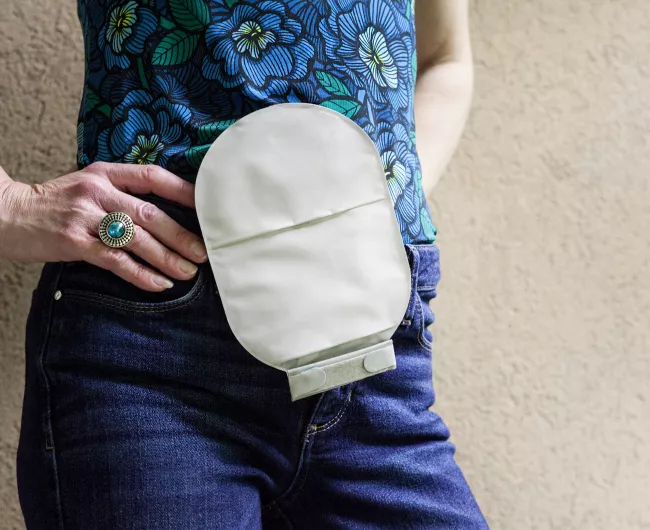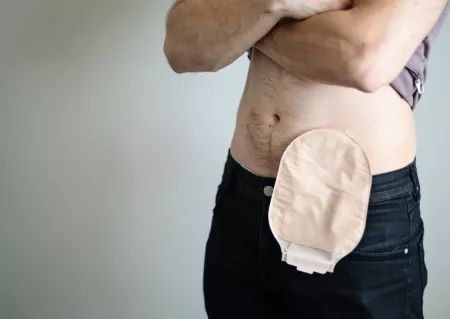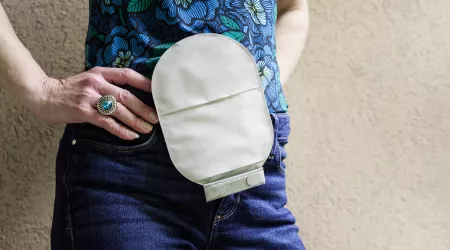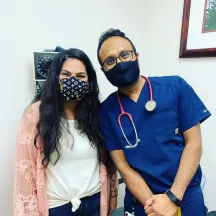
Managing an ostomy
It can be challenging to adjust to an ostomy. It's also really important to find effective support and resources -- we are here for you.


Adjusting to a new normal
For many people with colorectal cancer, adjusting to an ostomy can feel overwhelming. Your body looks different, your digestive system is working in a whole new way, and you have a device to manage. That’s a lot to get used to!

Ostomy teaching
One of the first steps is learning how to take care of your ostomy. An ostomy nurse will work closely with you to make sure you are comfortable with the care your ostomy will require.
You will need to know how to:
- Get the supplies you’ll need for your pouching system
- Empty your pouch
- Change the pouching system
- Care for and clean your stoma and the skin around it
- Check for signs of any complications

Taking charge of your own care
At first, your ostomy nurse will change your pouch and teach you about topics such as:
- Stoma care
- Nutrition
- Digestive changes that may occur
- Managing your ostomy during activities such as bathing or swimming
After observing the nurse, you will begin to participate actively in your own ostomy care.

Wearing an ostomy pouch
An ostomy pouch is made of odor-resistant plastic or vinyl. It attaches to your body with an adhesive skin product that your ostomy nurse will help you choose.
Keeping the skin around the stoma healthy is one of the most important parts of ostomy care. Be sure to let your nurse know if you experience any severe redness, blistering, or other skin irritation around the site.
Many people with a new ostomy are surprised to find that the pouch is not conspicuous. It’s small and stays flat, so you don’t have to wear loose or baggy clothes to hide it. Some people find it helps to wear a slightly tight fitting t-shirt or tank top to give the pouch some support under your clothes.
Fabric pouch covers are available to keep waste from being visible when you are undressed. Using a fabric pouch cover also keeps heat from building up between the plastic pouch and your skin.
Emptying an ostomy pouch
An opening at the bottom of the pouch allows you to empty it without removing it from your body.
Once you’ve gotten accustomed to opening and closing the bag, you should be able to do this in any restroom with no difficulty.
Because pouches are made of materials that confine waste and gas to the inside of the pouch, odor does not need to be a concern. The only time any odor will be noticeable is when you change or empty your pouch. You can also control odor with medication, deodorants made for the pouch, and avoiding certain foods.
Find your support system
From our experienced live Hotline staff to practical tips from our online community, we have the support and resources you need.
Top resources
Kat Sisler: From ostomy-opposed to ostomy-grateful
My cancer and ostomy journey began with a rude awakening in January 2023. My father was diagnosed with colorectal cancer at 42, and given that history, I asked my doctor at my yearly physical when I should begin screening.

Empowering lives: celebrating World Ostomy Day
Every year on the first Saturday of October, people worldwide come together to celebrate World Ostomy Day, also known as Ostomy Awareness Day. This day serves as a reminder of the resilience, strength, and courage millions of individuals display each year living with an ostomy.
How to cut and fit an ostomy wafer for a stoma
In this video, ostomate and certified patient and family support navigator Stephanie Rouse demonstrates how to cut and fit an ostomy wafer, or skin barrier, for a stoma.





